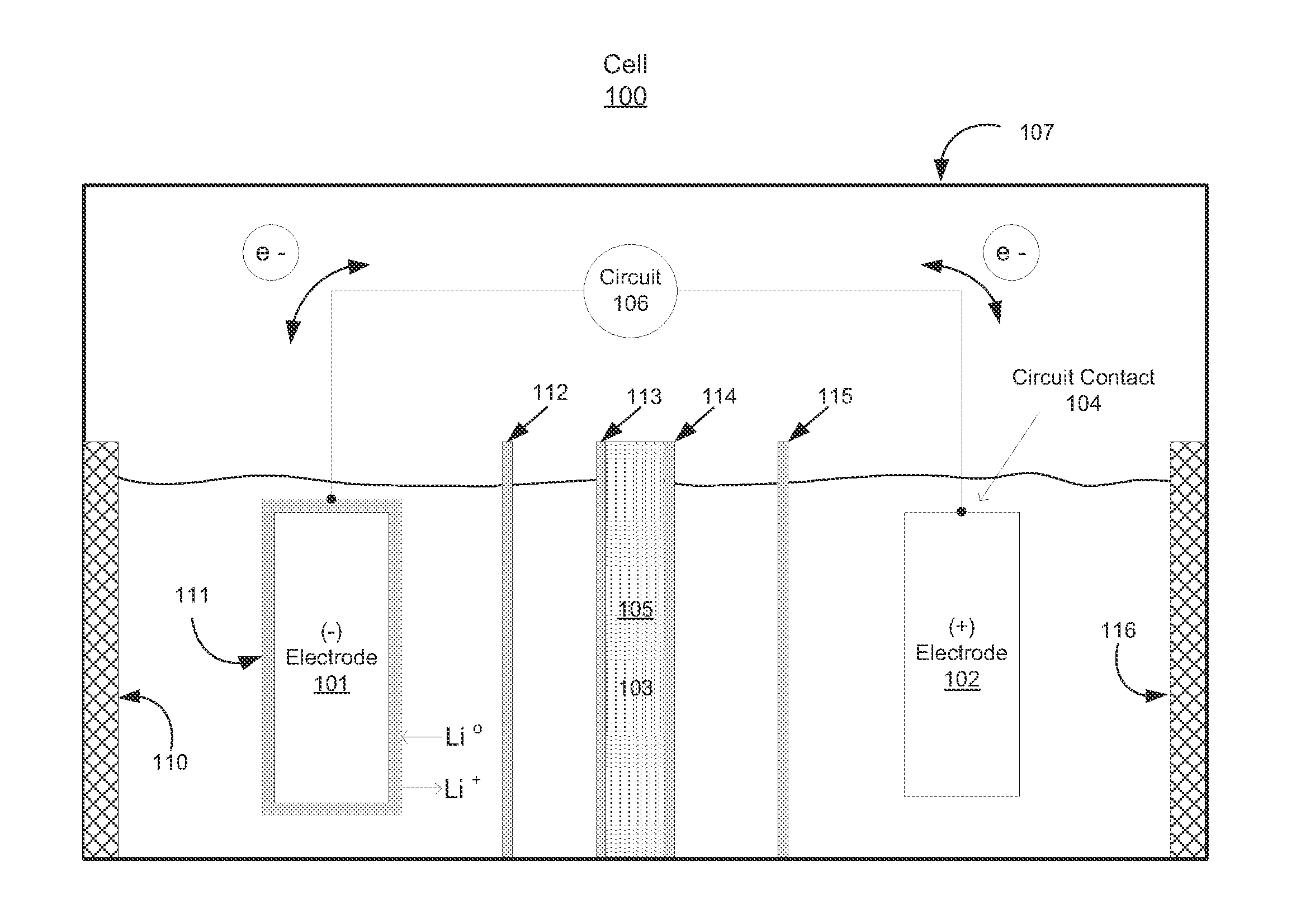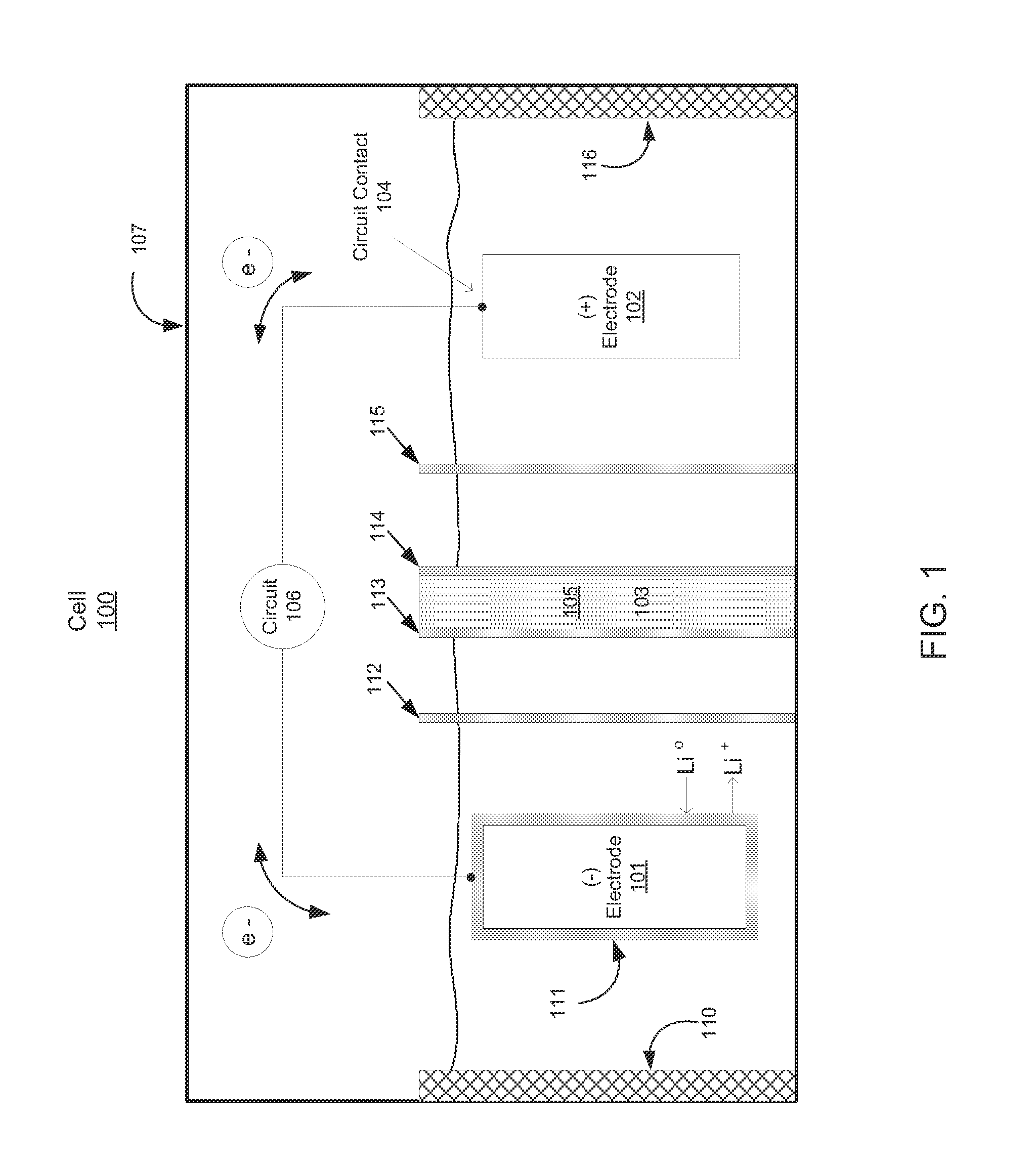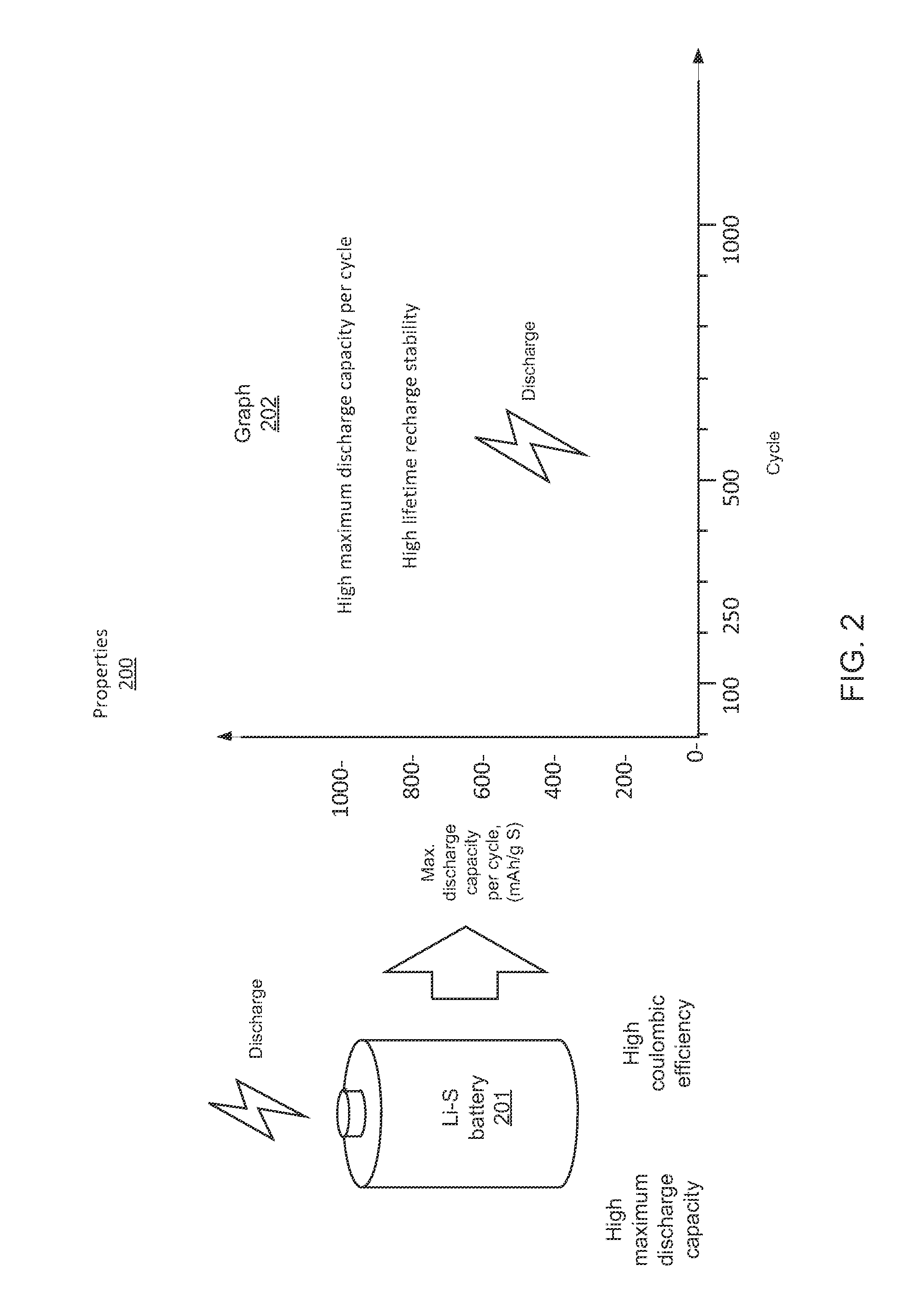Compositions, layerings, electrodes and methods for making
- Summary
- Abstract
- Description
- Claims
- Application Information
AI Technical Summary
Benefits of technology
Problems solved by technology
Method used
Image
Examples
example 1
[0105]Example 1 describes the preparation and electrochemical evaluation of a Li—S cell incorporating a porous separator coated with halogen ionomer which is a lithium exchanged derivative of NAFION®. An untreated polyolefin porous separator is treated by repeatedly immersing in a bath containing a solution including NAFION® coupled with drying to increase the loading of NAFION®.
[0106]Preparation of C—S Composite:
[0107]Approximately 1.0 g of carbon powder (KETJENBLACK EC-600JD, Akzo Nobel) having a surface area of approximately 1400 m2 / g BET (Product Data Sheet for KETJENBLACK EC-600JD, Akzo Nobel) and a pore volume of 4.07 cc / g (as measured by the BJH method) was placed in a 30 ml glass vial and loaded into an autoclave which was charged with approximately 100 grams of elemental sulfur (Sigma Aldrich 84683). The carbon powder was prevented from being in physical contact with the elemental sulfur but the carbon powder had access to sulfur vapor. The autoclave was closed, purged with...
example 2
[0126]Example 2 describes the preparation and electrochemical evaluation of a Li—S cell incorporating a porous separator coated with halogen ionomer which is a lithium exchanged derivative of NAFION®. An untreated polyolefin porous separator was repeatedly sprayed with a solution including NAFION® to increase the loading of NAFION®.
[0127]Preparation of C—S Composite:
[0128]Approximately 1.0 g of carbon powder (KETJENBLACK EC-600JD, Akzo Nobel) having a surface area of approximately 1400 m2 / g BET (Product Data Sheet for KETJENBLACK EC-600JD, Akzo Nobel) and a pore volume of 4.07 cc / g (as measured by the BJH method) was placed in a 30 ml glass vial and loaded into an autoclave which was charged with approximately 100 grams of elemental sulfur (Sigma Aldrich 84683). The carbon powder was prevented from being in physical contact with the elemental sulfur but the carbon powder had access to sulfur vapor. The autoclave was closed, purged with nitrogen, and then heated to 300° C. for 24 hou...
example 3
[0146]Example 3 describes the preparation and electrochemical evaluation of a Li—S cell incorporating a halogen ionomer membrane which is a lithium exchanged derivative of a NAFION® membrane.
[0147]Preparation of C—S Composite:
[0148]Approximately 1.0 g of carbon powder (KETJENBLACK EC-600JD, Akzo Nobel) having a surface area of approximately 1400 m2 / g BET (Product Data Sheet for KETJENBLACK EC-600JD, Akzo Nobel) and a pore volume of 4.07 cc / g (as measured by the BJH method) was placed in a 30 ml glass vial and loaded into an autoclave which was charged with approximately 100 grams of elemental sulfur (Sigma Aldrich 84683). The carbon powder was prevented from being in physical contact with the elemental sulfur but the carbon powder had access to sulfur vapor. The autoclave was closed, purged with nitrogen, and then heated to 300° C. for 24 hours under a static atmosphere to develop sulfur vapor. The final sulfur content of the C—S composite was 51 wt. % sulfur.
[0149]Jar Milling of C—...
PUM
| Property | Measurement | Unit |
|---|---|---|
| Fraction | aaaaa | aaaaa |
| Energy | aaaaa | aaaaa |
| Pore volume | aaaaa | aaaaa |
Abstract
Description
Claims
Application Information
 Login to View More
Login to View More - R&D
- Intellectual Property
- Life Sciences
- Materials
- Tech Scout
- Unparalleled Data Quality
- Higher Quality Content
- 60% Fewer Hallucinations
Browse by: Latest US Patents, China's latest patents, Technical Efficacy Thesaurus, Application Domain, Technology Topic, Popular Technical Reports.
© 2025 PatSnap. All rights reserved.Legal|Privacy policy|Modern Slavery Act Transparency Statement|Sitemap|About US| Contact US: help@patsnap.com



